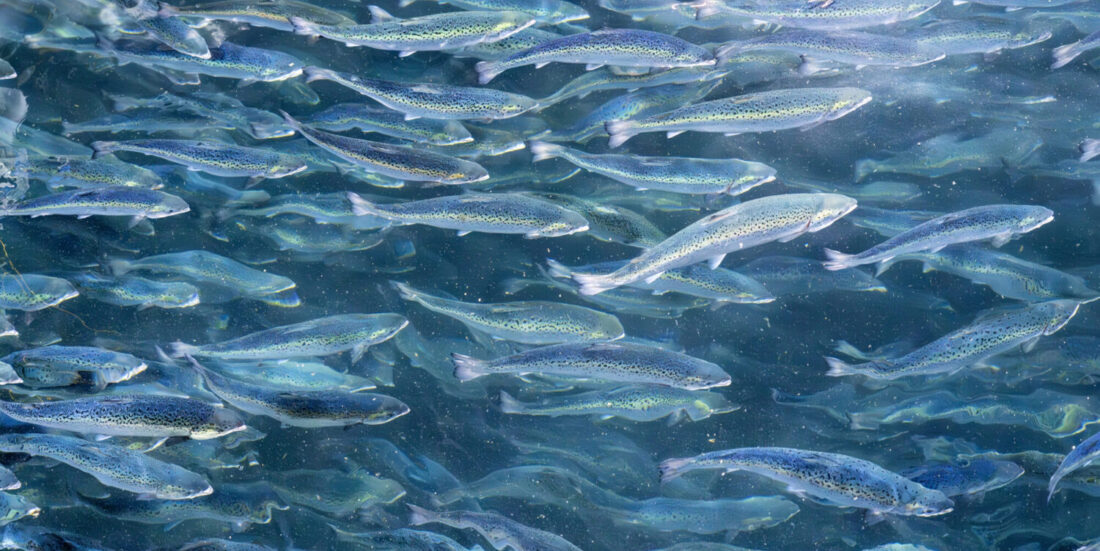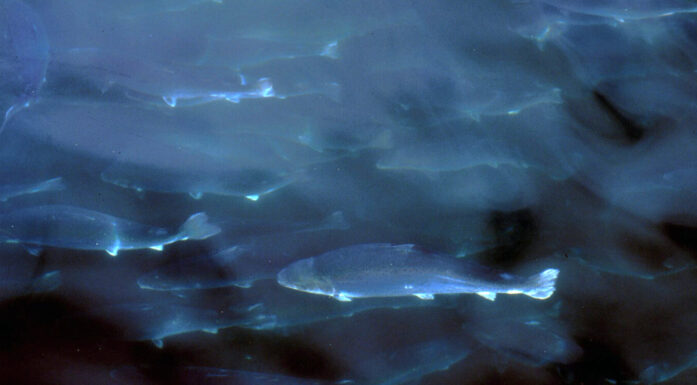Norway needs a ‘salmon feed revolution’
The issue of salmon feed has become a bottleneck, hindering the growth and sustainability of the Norwegian aquaculture sector. In the future, insect meal, bristle worms and bacteria that consume CO2 may become essential components of a farmed salmon’s diet.
The world is rich in salt water. For this reason, and because fish do not have to construct a robust skeleton or achieve a body temperature of 37 degrees, it is considered sustainable to produce the protein-rich meat offered by farmed salmon. This is important and fundamental to Norway’s stated ambition to increase its current rates of farmed salmon production by four- to five-fold.
However, if we fail to address the growing so-called ‘feed squeeze’, these plans for growth won’t be worth the paper they’re printed on.
A volume of five million tonnes of salmon from Norwegian farms in 2050 has become a national ambition. If this is to be achieved, problems linked to sea lice infestation, escapes and harmful environmental discharges must be eliminated. But the biggest bottleneck remains the feed issue.
Global insecurity
Farmed salmon require feed that is nutritionally correct. It must be energy-dense and promote rapid growth. And it must also be procured sustainably.
Currently, two thirds of feed raw materials fed to Norwegian farmed salmon are obtained from south of the equator, and less than ten per cent from Norway. Only one half of one per cent are ‘new’ raw materials such as insect meal or microalgae.
Current global insecurity means that any ambitions for growth in Norway cannot be based on access to feed that relies on today’s over-extended supply chains.
The EU measures sustainability
Moreover, current feed materials account for as much as 75 per cent of the climate footprint linked to Norwegian farmed salmon. If the sector is to meet the requirements of the EU Taxonomy (a classification system for sustainable commercial activities), it has to source the most eco-friendly feed available.
Both of these factors suggest that the Norwegian aquaculture sector requires nothing less than a ‘feed revolution’. If we fail to act, we will simply exacerbate the growing ‘feed squeeze’.
To achieve a four- to five-fold increase in salmon production, the industry requires not only new feed raw materials from lower levels in the food chain, but also protein recovery from cultivated single-celled organisms such as bacteria and microalgae.
A roadmap out of the ‘feed squeeze’
At SINTEF we have prepared a roadmap to address the problems emerging from the feed dilemma. We have considered all appropriate raw materials that can be used in the manufacture of salmon feed. In particular, we have evaluated the opportunities for harvesting or cultivating these materials in Norway.
- If we assemble all the potential resources that Norway can harvest from the sea, including waste raw materials, together with low-level organisms in the food chain such as krill, the zooplankton Calanus, and unexploited species including small deep-water fish such as pearlsides and glacier lantern fish, we can recover 350,000 tonnes of protein annually.
- Resources, such as grasses, derived from Norwegian terrestrial agriculture offer a further 260,000 tonnes, although this draws us rapidly into a conflict between feed for domestic animals versus feed for salmon.
- A further potential source is the cultivation of organisms such as insects, bristle worms and amphipods – all based on organic material such as sludge sourced from the fish farming sector and household vegetable waste. Add to this other organisms that do not require feed, such as mussels or seaweeds that can offer a further 120,000 tonnes of protein.
Assessing other raw materials
If, by 2050, we achieve a viable industry based on these raw materials, which is a formidable challenge in itself, we will have access to more than 700,000 tonnes of protein every year.
This will make it possible to produce something in the region of 1.7 million tonnes of farmed salmon – a significant improvement on our current situation, although still some way short of the ultimate ambition of five million tonnes. This is why we have to look into other feed resources.
- One possibility is to produce so-called single-cell proteins, such as those derived from microalgae, yeast or bacteria. One conceivable solution is to grow bacteria in an atmosphere of carbon dioxide and hydrogen. This is an energy-demanding process, but has the advantage that the CO2 consumed by the bacteria performs a useful job before it finally ends up in the atmosphere.
- Alternatively, microalgae can be cultivated using sunlight, and bacteria on sugars harvested from sugar or forestry plantations.
Consolidating the circular economy
The single-cell protein source that will be most profitable for investors will vary from region to region. Our estimate indicates that we can obtain as much as 300,000 tonnes of protein annually from such sources.
If we add to this the protein derived from established sources, by 2050 Norway will be able to obtain half of the protein needed to produce five million tonnes of farmed salmon. And all of this sustainably, because the utilisation of sludge, waste raw materials and CO2 from industrial point sources will consolidate the circular economy.
- Read also: Small snail looking to be big business
Attractive to investors
Fish farms self-sufficient in half of the feed raw materials they need to produce this tonnage of salmon will require an investment of about 50 billion kroner. This will be a large-scale industry that may be attractive to potential investors.
In particular because sustainability has now become a key investment criterion. Eco-friendly foods are high on the agenda in terms of global need, and fish feed will be a key factor as part of a sustainable food system.
Norway is rich in resources that are ideal for the manufacture of salmon feed and is host to many research communities that can act as partners for feed producers. We have the infrastructure in place to expand feed production to pilot scale. If this transition is to happen rapidly, public funding will be needed to trigger private investment in research and innovation.
The next step should be to establish regional pilot projects that exploit available feed resources close to existing salmon farms. This will increase the chances of achieving a cost-effective feed revolution.
This article was first published in the financial daily Dagens Næringsliv on 20 August 2023 and is reprinted here with the permission of the paper.



